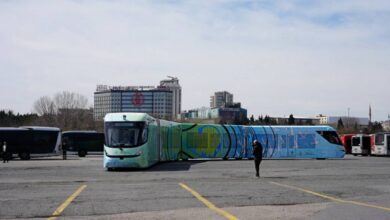
Hundreds of years of abbaras in Kilis add color to the history of the city with their beauty and architecture. Kilis, located on the Syrian border, has 6 Kabalti and Kosk Kabaaltisi. Dead-end streets in many streets in Kilis are generally 5-15 meters long and 1.5-2.5 meters wide, and are considered as private roads separated from the main road of the neighborhood and considered as the only road. It is one of the most important historical details of the provinces of the Southeastern Anatolia Region. Abbaras (kabalti) is still standing today. It is stated that the fact that a significant part of the texture consisting of hundreds of beautiful houses and streets has survived to the present day without deterioration is a great gain in terms of tourism.

Kilis, located at the zero point of the Syrian border, which is one of the rare cities that managed to survive by preserving an important part of its civil architectural texture and monumental architectural texture, attracts the attention of local and foreign tourists coming to the district. City. Kilis, Sanliurfa, Adiyaman, Batman, Diyarbakir, Gaziantep within the scope of the GAP. , Mardin, Siirt and Sirnak, there are a total of 14 cabins, 9 and 5 of which are mansions, in the list of architectural examples of the Ministry of Culture and Tourism.
Stone mason Mehmet Ali Katmer stated that there were no old masters to make cabal, “After these cabals are molded, structures are built on them. They were built on the ruins of the Ottoman period and before. Later, the cabal and the soil under the arch were removed. We can say that there is no master.”

What is Abbara?
The architectural weaving element consisting of curvilinear surfaces or surfaces made by using knitting techniques in the provinces of the Southeastern Anatolia Region is called abbara or kabaltı. Abbaras sometimes have pointed arches, low arches or round arches, and the weave system appears as barrel vaults and cross vaults. The landings at the entrances of the houses, the rooms (abbaras) sometimes built above the streets, show how the common and private areas are structured at the crossroads. It is stated that the lower part of the Abbaras is public and the upper part is the property of the owner. It is known that Abbaras have passages where they can take advantage of their coolness and shade, albeit for a short time, while protecting themselves from the heat of summer.







